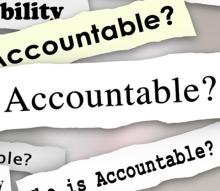Post written by guest blogger Ana Martins Ribeiro, Special Programs Coordinator in OITE.
How to Help Individuals and Communities Heal
So much has been said about how the Coronavirus pandemic is threatening our mental health and how the anxiety, panic and fear we are experiencing are affecting our focus, productivity and wellbeing. If we were to look inside people’s physiology now, we would probably see a staggeringly different profile in hormone levels, brain activation and overall homeostasis. Our efforts towards understanding the present crisis and how it’s is affecting our lives may often keep us present focused, leading to difficulty remembering that this major event may affect us in the future as individuals and in our interaction with others as members of a community. This pandemic is, in fact, a collective trauma crisis in the making. Despite being usually seen an individual psychological response, trauma can be a collective phenomenon when experienced as a group, influencing the way communities behave and potentially altering the course of global history. Although the word trauma, the experience of severe psychological distress following a terrible or life-threatening event, may sound alarming, it is essential that we acknowledge the complexity of what is happening within and around us, so we can better understand its potentially severe consequences and act on it, now as well as in the future. By supporting both individuals and communities, we can hopefully mitigate negative trauma reactions.
Trauma in the Time of Coronavirus
Perhaps one of the main differences between humans and other animals in their response to stress is that even though they’re constantly under the threat of death, animals in the wild show no symptoms of trauma. According to psychologist Peter A. Levine, trauma is a consequence of the third survival response to a perceived life threat, which is to freeze, i.e., to make yourself be invisible, to immobilize, to play dead. This is an automatic response triggered when fight or flight responses are not possible to materialize. While wild animals release the energy that was not used to fight or flight through a different set of behaviors, humans, on the other hand, often retain this energy and store it, leading to an exacerbated response to invisible threat alarms and causing severe dysregulation and dissociation. For most people, including those who will never get infected by the Coronavirus, the overall change in their routines, the imminence of facing unpredictable outcomes as well as empathizing with others’ grief and loss, together with the fear of contracting the virus itself may potentially lead to trauma.
Protective Factors Against PTSD
The exposure to trauma is a pre-requisite for posttraumatic stress disorder (PTSD). However, not everyone who experiences trauma will respond equally to the same stimuli, and not everyone who experiences symptoms after the trauma will develop PTSD. To better understand how our bodies and minds are adapting to this traumatic event, psychologists all over the world are encouraging people to talk about what they’re experiencing, paying particular attention to thoughts and emotions. According to psychologist Elyssa Barbash, revisiting what one is experiencing, and expressing what one is thinking and feeling may confer protection against PTSD. In addition, avoiding avoidance, i.e. fighting the urge to ignore or repress our thoughts and emotions is also a strategy to prevent the internal dysregulation caused by trauma. If these strategies are not enough and one is still feeling overwhelmed, fearful and helpless, experts recommend seeking for a trained, experienced, and licensed trauma specialist. The OITE also wants to help trainees take good care of themselves during these difficult times; to find group sessions on wellness, resilience, and mindfulness meditation, please visit our website.
Social Restructuring After a Collective Trauma Experience
An event that can help us examine the social impact of collective trauma is that of the terrorist attacks of September 11, 2001 (9/11). Even though most people were living far away from the site where the event took place and did not experience a direct threat, there was a national (and international) impact on people’s lives, and many individuals reported elevated stress levels on the days and weeks that followed. At the same time, positive social changes of multiple kinds were evident including increased altruism, kindness, and solidarity. In the political realm, the 9/11 events potentiated a shift towards political conservatism as well as an increase in religiosity and spirituality. This shows us how collective traumatic experiences dramatically affect the way we perceive and react to the world inside and outside of ourselves, as well as in our interaction with others.
As Peter A. Levine once wrote “Trauma is a part of life. The good news is that so is resilience (…), the capacity we all possess to rebound from stress and feelings of fear, helplessness and overwhelm”. Though we cannot deny our inherent biological responses to traumatic events as we cannot escape the events themselves, we must recognize our capacity to survive, adapt and eventually transform these experiences, using it to re-establish our internal homeostasis and ultimately return as a group to a state of social equilibrium. Perhaps keeping in mind the idea that social distancing means, in fact, physical distancing and social togetherness could have a restorative effect in our inner and outer lives and help us overcome the consequences of this word-wide crisis.




